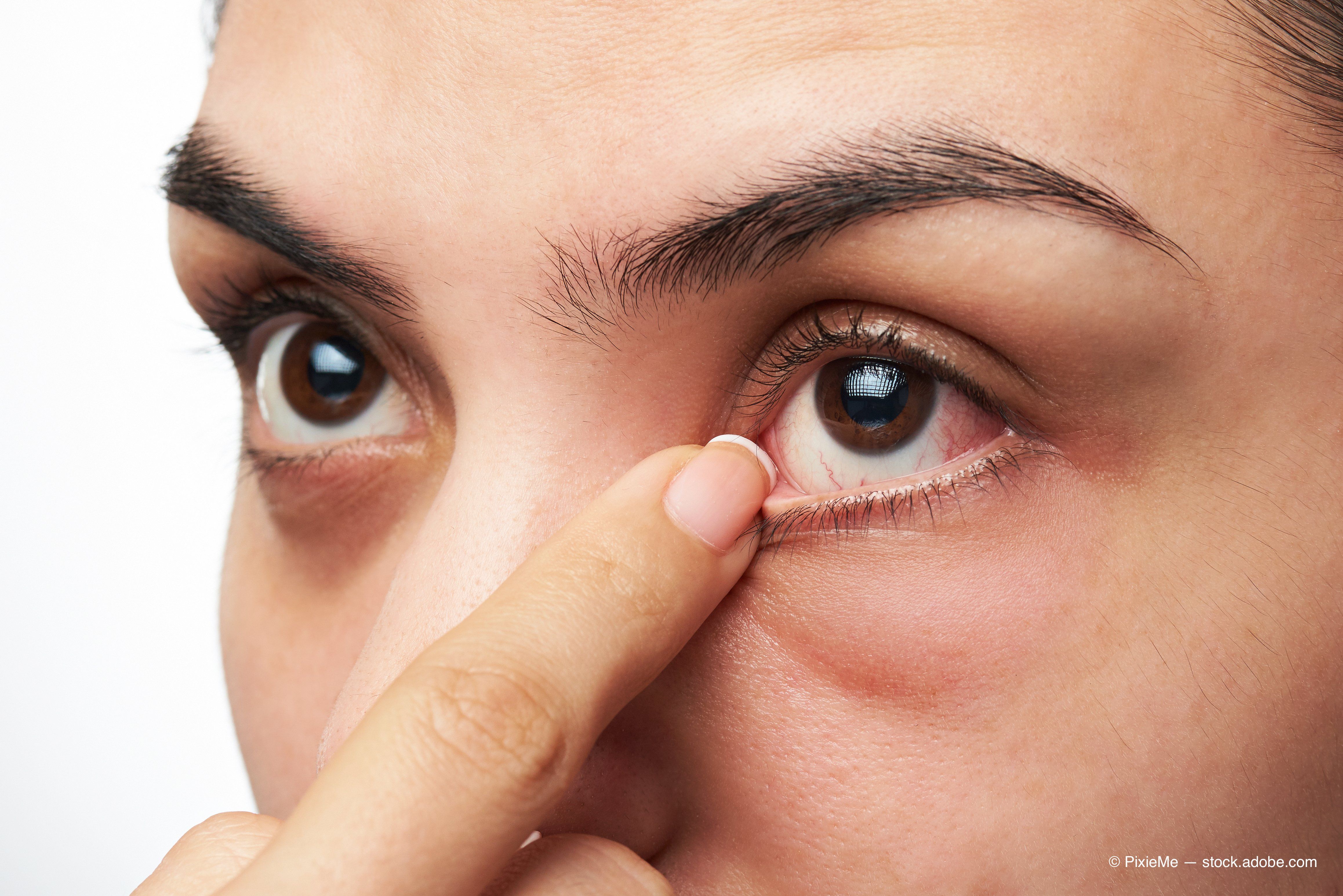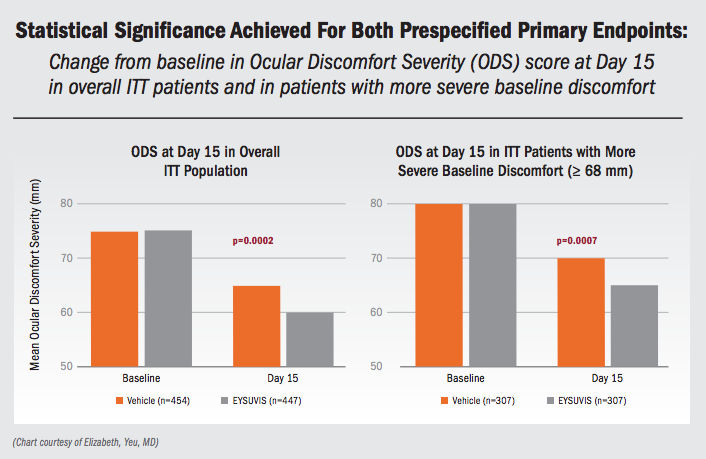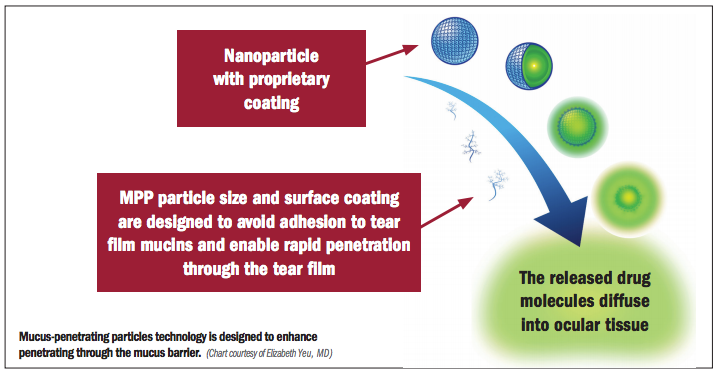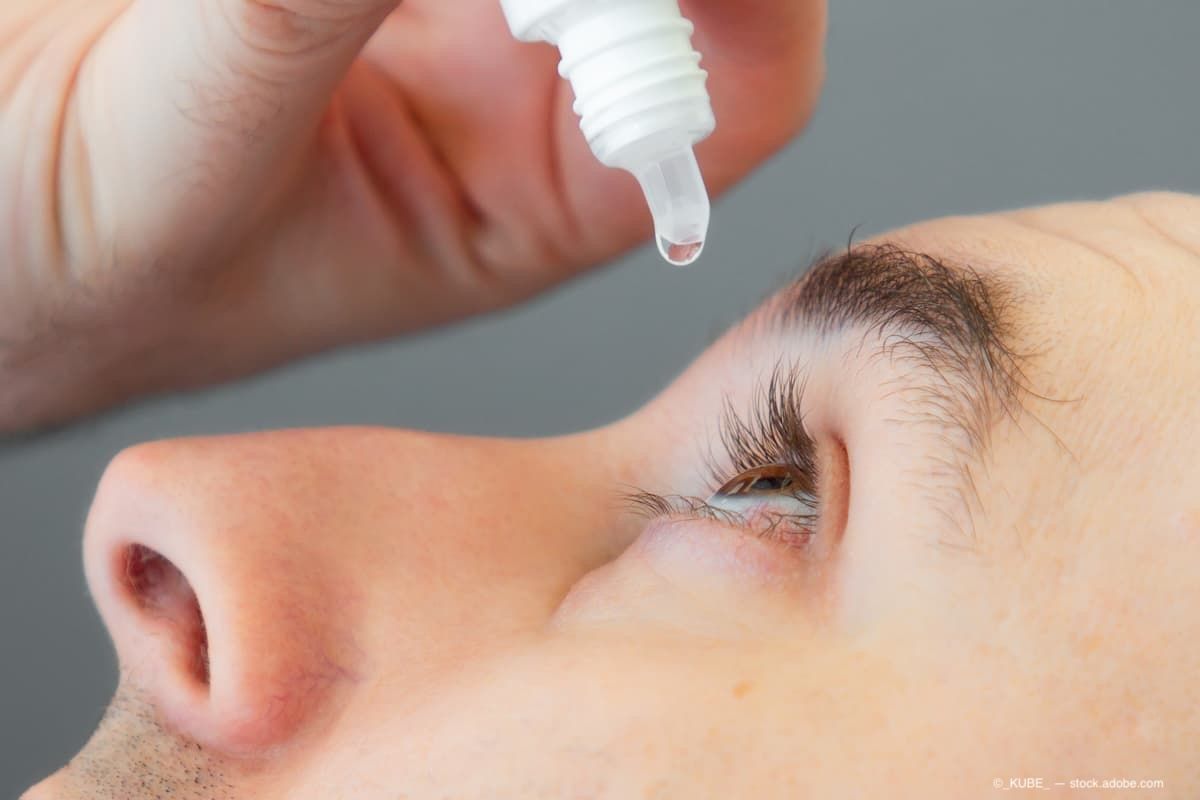Article
Investigational topical corticosteroid demonstrates efficacy for dry eye
Author(s):

Results of a two-week phase III study demonstrated efficacy of loteprednol etabonate ophthalmic suspension 0.25% found the investigational treatment was well-tolerated and had a favorable safety profile.
This article was reviewed by Elizabeth Yeu, MD
Loteprednol etabonate (LE) ophthalmic suspension 0.25% (Eysuvis, Kala Pharmaceuticals) met its primary and key secondary endpoints in a third phase III clinical trial investigating the corticosteroid in a

novel formulation as a treatment for dry eye disease (DED).
The LE 0.25% suspension is formulated with a proprietary mucus-penetrating particle drug delivery technology (AMPPLIFY) that improves bioavailability of the active ingredient at the target site.
Topline results from the phase III study known as STRIDE III showed statistical superiority of LE 0.25% suspension (formerly known as KP-121) compared with vehicle for improving signs and symptoms of DED. In addition, the investigational corticosteroid was well-tolerated and had a favorable safety profile.
Related: New techniques probed for managing dry eye disease
Elizabeth Yeu, MD, an investigator in the LE 0.25% studies, is assistant professor of ophthalmology, Eastern Virginia Medical School, Norfolk, VA, and a partner, Virginia Eye Consultants, Norfolk, VA.
“The results from STRIDE III showing benefit of LE 0.25% suspension for improving both signs and symptoms of DED are quite positive and replicate what was seen in STRIDE I and II,” Dr. Ueu said. “Collectively, these studies enrolled almost 3000 patients, making STRIDE the largest DED clinical trial program to date, and the results indicate that LE 0.25% suspension is a rapid-acting, safe, and effective anti-inflammatory therapy.”
Dr. Yeu added that if approved, LE 0.25% suspension will be an important therapeutic addition for the temporary relief of the signs and symptoms of DED.
“It is estimated that more than 17 million people in the US suffer from DED and 80% to 90% of those individuals experience flares for which a steroid can be appropriate treatment,” she said. “While eye care providers have used topical steroids to quiesce acute DED flares, we are always cautious about the potential for IOP elevations. It is noteworthy that no patients treated with LE 0.25% suspension in STRIDE III had an IOP increase >5 mmHg leading to IOP >21 mmHg.”

STRIDE III was a multicenter, double-masked study that randomly selected 901 patients 1:1 to treatment four times a day for two weeks with LE 0.25% or vehicle.
Patients were eligible for study enrollment if they had a documented clinical diagnosis of DED in both eyes and were only randomized to treatment if they still met the study’s eligibility criteria after a two-week run-in period during which they used the investigational product’s vehicle four times a day.
Related: Lab tear tests aid reimbursements, clinical application of dry eye
Using a 0 to 100 mm visual analog rating scale, patients were instructed to record Ocular Discomfort Severity (ODS) daily in a diary. Patients returned for follow-up visits on days eight and 15 after randomization for evaluations that included conjunctival hyperemia, corneal staining, and safety.
The primary endpoint looked at change in ODS score at day 15 in the overall intent-to-treat (ITT) population and in the subgroup of ITT patients with more severe baseline discomfort (ODS ≥ 68 mm).
STRIDE III achieved both of its independent primary endpoints, demonstrating a statistically significant difference in the LE 0.25% group compared to vehicle in the overall ITT population (p = .0002) and the subgroup (n = 602) with more severe baseline ocular discomfort (p = .0007).
In analyses of secondary endpoints, LE 0.25% suspension demonstrated statistical superiority for improving conjunctival hyperemia at day 15 (p < .0001), ODS at day 8 (P=.0282), and total corneal staining at day 15 (p = .0042).
Instillation site pain was the most common adverse event in both the LE 0.25% suspension and vehicle groups (2.9% and 1.5%, respectively). No patients in either group experienced an IOP increase >5 mmHg that resulted in an IOP ≥21 mmHg nor did any patient have an IOP increase >10 mmHg.
Related: Surfing the dry eye pipeline
Prior phase II results
In STRIDE I, LE 0.25% suspension achieved the sign and symptom endpoints and demonstrated rapid and sustained improvement in the ODS score. In STRIDE II, LE 0.25% suspension achieved its sign endpoint and showed a significant benefit for reducing corneal staining and for improving the ODS score at day eight.
Kala Pharmaceuticals is working on finalizing resubmission of the NDA for LE 0.25% suspension as a treatment for the temporary relief of the signs and symptoms of DED utilizing a two-week course of therapy.
Read more by Cheryl Guttman Krader
Elizabeth Yeu, MD
E: eyeulin@gmail.com
Dr. Yeu is a consultant to and investigator for Kala Pharmaceuticals and is a consultant to and does research for other companies that market or are developing products for the treatment of dry eye.
Newsletter
Don’t miss out—get Ophthalmology Times updates on the latest clinical advancements and expert interviews, straight to your inbox.




